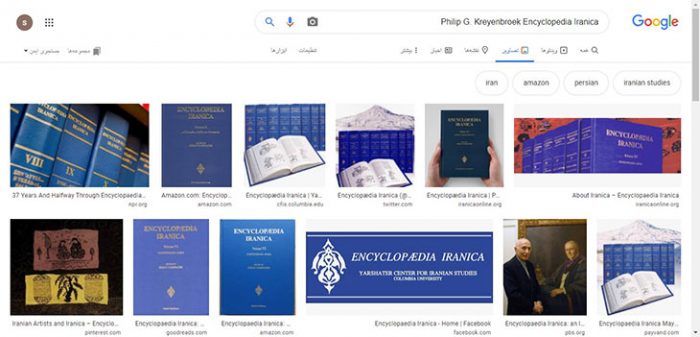Iranica Encyclopedia
Philip G. Kreyenbroek Encyclopedia Iranica
Philip G. Kreyenbroek has a unique position among the scholars of Kurdish studies. He is the only modern scholar of this field who also has a deep knowledge of ancient cultures of the region. At the same time, he is the one who has insight not only into the history of the religious ideas, but also the presence of such ideas at the contemporary period. This is because he has worked not only bout Zoroastrian angles like Sorosha, but also he has investigated the religious life of contemporary Parsi community in India. Kreyebroek has also worked about the religious tenets of the Ezdi or Yezidi religion as well the present community itself. The cultural importance of this community regards among others, that they have been able to preserve many aspects of the ancient Mesopotamian culture. For that sake the contributions of Kreyenbroek about religious rituals of the Ezdi and the related communities are of outstanding importance.
Philip G. Kreyenbroek Encyclopedia Iranica
KĀKĀʾI
, “KĀKĀʾI,” Encyclopædia Iranica, XV/4, p. 355, available online at
INITIATION IN YAZIDISM
“YAZIDIS ii. INITIATION IN YAZIDISM,” Encyclopædia Iranica, online edition, 2005
MIRDREKVANDI, ALI
MIRDREKVANDI, ʿALI, nicknamed “Gunga Din,” author of “Irradiant,” a popular epic written in broken English in the mid-20th century. Little is known about ʿAli Mirdrekvandi, except that he was a poorly educated native of Luristan who had, incredibly, taught himself enough English to write “Irradiant.” He attached himself to British and American military circles in Tehran in the early 1940s as a menial worker, and thus he met John F. B. Hemming, who helped him with his study of English and asked him in August 1943 to write a story. Thus prompted, Mirdrekvandi began to write the story he entitled .“Irradiant,” which was based on stories he had heard from his grandfather..
“ MIRDREKVANDI, ALI” Originally Published: July 20, 2002
KURDISH WRITTEN LITERATURE
KURDISH WRITTEN LITERATURE. Written, “elevated” poetry traditionally played a less prominent role in Kurdish society than folk poetry (q.v.) did. The number of written literary works in Kurdish is far smaller than in the surrounding cultures, but it is comparable to that of Pashto (q.v.). The written literary output in Kurdish consisted mostly of poetry until the 20th century, when a prose literature developed in both major dialects of Kurdish as a result of social and political developments.
KURDISH WRITTEN LITERATURE Originally Published: July 20, 2005
HĒRBED
HĒRBED (or Hērbad, Ērvad), a Zoroastrian priestly title, at present used for a “priest in minor orders,” that is, a man of priestly family who has undergone the initiatory Nāwar ceremony and is qualified to officiate at lower rituals.
Philip G. Kreyenbroek HĒRBED Originally Published: December 15, 2003
(Philip G. Kreyenbroek (ḴĀNĀ QOBĀDI
ḴĀNĀ QOBĀDI, Gurāni poet (fl. ca.1700-1759 or 1778) and one of the major members of the school of Gurāni poetry that is said to have been founded by Yusof Yaskā (d. 1636). The development of Gurāni poetry was furthered by the Ardalān dynasty, which carved out a semi-independent state in southern Kurdistan in the late 16th century CE. Gurāni became the language of the Ardalān court, and that dynasty promoted its use as a literary koine throughout the southern Kurdish areas.
ḴĀNĀ QOBĀDI Originally Published: December 15, 2010
HĒRBEDESTĀN
HĒRBEDESTĀN (school for priests, religious school), a Middle Persian term designating (1) Zoroastrian priestly studies and (2) an Avestan/Pahlavi text found together with the Nērangestān manuscripts.
HĒRBEDESTĀN Originally Published: December 15, 2003

 فارسی
فارسی
